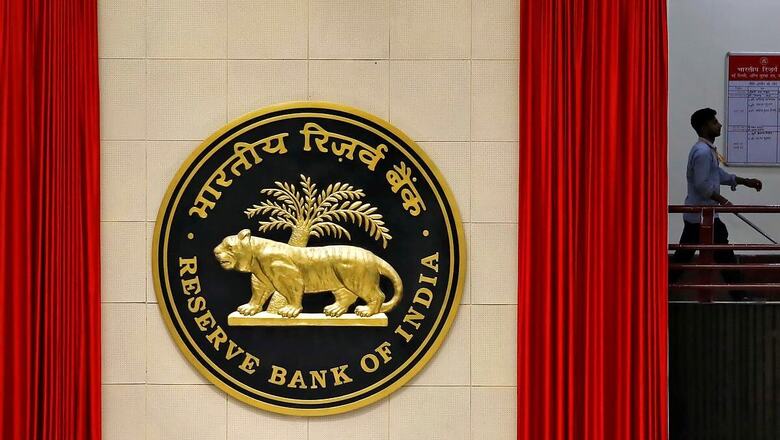
views
The government should have a clear exit strategy and credible milestones for fiscal consolidation in the coming years, the Reserve Bank said on Tuesday in its annual report amid meeting the fiscal targets becoming more challenging due to the coronavirus pandemic.
Based on information from 25 states, the general government fiscal deficit increased from 5.4 per cent of GDP in 2018-19 to 6.5 per cent in 2019-20 (revised estimate). Further, outstanding liabilities rose to 70.4 per cent of GDP in 2019-20 (revised estimate) from 67.5 per cent in 2018-19, according to the annual report.
In 2020-21, fiscal deficit and outstanding liabilities are budgeted at 5.8 per cent and 70.5 per cent of the GDP, respectively. However, based on provisional accounts information, the general government fiscal deficit, including all states, is expected to deteriorate further to about 7.5 per cent in 2019-20.
“Thus, the fiscal gains achieved in the previous two years were reversed in 2019-20,” the report said.
It noted that meeting the fiscal targets budgeted in 2020-21 has become even more challenging due to COVID-19, in view of containment measures and fiscal interventions for providing health infrastructure, helping vulnerable sections of the society and sector specific relief measures.
“In this scenario, it is desirable to have a clear exit strategy with credible consolidation milestones and timelines in reworking the path towards fiscal rectitude in the coming years,” the report said.
Observing that most of the estimates for 2020-21 were worked out before the nation-wide lockdown, the report said, “given the shortfall in revenues — a direct fallout of subdued economic activity and increased expenditure requirement to fight the pandemic — the general government fiscal deficit and debt are likely to be materially higher than budgeted”.
About 2019-20, the report said the deterioration in major deficit indicators may be attributed to tax revenue shortfall, both cyclical and structural. At the same time, a significant curtailment in expenditure was justifiably avoided in view of the economic slowdown, which got accentuated from the second half of 2018-19.
The central government pegged its fiscal deficit for 2020-21 at Rs 7.96 lakh crore or 3.5 per cent of the GDP in the budget which was presented by Finance Minister Nirmala Sitharaman in February. The estimate might be revised significantly in view of the economic disruptions due to COVID-19.
During April-June period, the fiscal deficit widened to Rs 6.62 lakh crore or 83.2 per cent of the budget estimates, mainly on account of poor tax collections due to the coronavirus lockdown and increased expenditure.
The government has overshot the budgeted fiscal deficit of 3.3 per cent of GDP in 2019-20 fiscal by a huge margin as revenues faltered. The final print of the deficit came in at 4.59 per cent.
The Reserve Bank of India (RBI) said estimates for gross tax revenue in 2019-20 were brought down by Rs 4.51 lakh crore vis-a-vis budget estimates. On a year-on-year (y-o-y) basis, direct taxes declined by 7.7 per cent in 2019-20 as against a 13.4 per cent increase in 2018-19, whereas indirect tax growth decelerated to 1.7 per cent from 2.9 per cent a year ago.
In 2019-20, although the shortfall in tax revenues was partially compensated by an increase in non-tax revenues, primarily due to transfer of excess reserves from the Reserve Bank and partial settlement of pending adjusted gross revenue (AGR) dues by telecom companies, they fell short of the Revised Estimates.




















Comments
0 comment